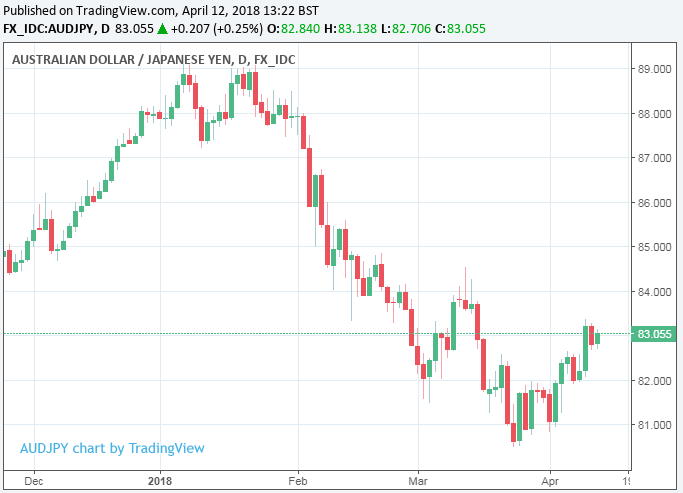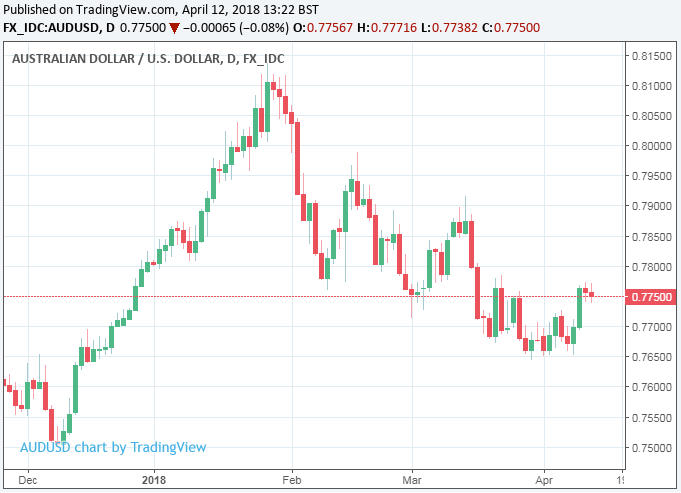The Australian Dollar "Could Finally Have its Time in the Sun" say Credit Suisse
- Written by: James Skinner
-
- AUD outlook turns bullish as iron ore bottoms, oil rises.
- Credit Suisse say time to get "tactically" behind the AUD.
- Maybank stays "tactically bullish" while CBA reiterates forecasts.

© Rawpixel.com
The Australian Dollar could finally be on the verge of having its own moment in the sun this year, according to strategists at Credit Suisse, now that iron ore prices appear to have bottomed and oil is continuing its climb higher.
Commodities are the beating heart of Australia's economy so directional shifts in prices can have a big impact on investor sentiment toward, as well as demand for, the Aussie Dollar.
"After a soggy start to 2018, AUD could finally have its time in the sun," says Shahab Jalinoos, an FX strategist at Credit Suisse, one of Europe's largest investment banks.
This call comes after a torrid two months that have seen the Australian currency erase an earlier 5% gain over the US Dollar while falling to a 5.5% 2018 loss against Pound Sterling and the Japanese Yen. The Antipodean unit has also been left nursing a 3.5% decline against the Euro and 4.5% fall relative to the New Zealand Dollar.

Above: Pound-to-Aussie rate shown at daily intervals.
"The currency has suffered from being a favoured short against Emerging Market long positions, due to its now-low carry and perceived high correlation with the emerging market bloc. But with iron ore prices having seemingly based already, and LNG export sentiment boosted by rallying oil prices, the market may feel compelled to scale back its bearishness on the currency," Jalinoos adds.
Prices of iron ore, Australia's largest single export, have fallen by more than 20% since the turn of the year as fears over Chinese demand for steel and its associated hard commodities weighed on markets.
However, prices of iron ore futures traded on China's Dalian Commodity Exchange have stabilised in April after bottoming out at CNY 436.6. In addition, Brent crude oil prices have risen by 7.6% since the start of the year, to $71.98 Thursday, with the bulk of this increase coming in the las two weeks.
Fears over a possible conflict in the Middle East as well as concerns over the fate of the so called Iranian nuclear deal are at the heart of this rise. They are important because a Middle Eastern conflict or resumption of harsh sanctions against Iran would dent forecasts for global oil supply and place further upward pressure on prices.
Stability in iron ore markets is positive for the Aussie Dollar for quite obvious reasons but rising oil is also relevant too because prices of liquified natural gas contracts are closely correlated with those of Asian crude oil prices, according to Credit Suisse.
"Having finally closed long held AUDJPY shorts 2 weeks ago, we now find ourselves tactically bullish," Jalinoos says, referring to the Credit Suisse FX team's view on the Australian Dollar.

Above: AUD/JPY rate shown at daily intervals.
Advertisement
Get up to 5% more foreign exchange by using a specialist provider to get closer to the real market rate and avoid the gaping spreads charged by your bank when providing currency. Learn more here.
Jalinoos and his team have recommended to clients that they now bet on a rise in the AUD/JPY rate over the short term, entering trades around the 83.00 level and targeting a move up to the 86.00 area, which coincides with the 200 day moving average of the prices for the exchange rate. They advocate a stop loss around the 81.80 level.
Alternatively, speculators can consider betting on a rise in the Australian Dollar relative to the Singaporean Dollar, entering the trade around 1.0150 and targeting a move up to 1.0450, with a stop loss at 1.0000. Or those with a lower tolerance for risk can buy the Aussie Dollar relative to the New Taiwan Dollar.
"In all cases, the currencies we recommend shorting represent countries that are significant crude oil importers, though we accept that Singapore's status as a major refined oil product exporter makes it a less obvious short for this purpose," says Jalinoos.
The "tactically bullish" calls from Credit Suisse coincide with a similar recommendation from Maybank, one of Malaysia's largest lenders operating out of Singapore, which has advocated betting on a rise in the AUD/USD rate over the coming weeks.

Above: AUD/USD rate shown at daily intervals.
“We see a tactical opportunity to buy this pair [AUDUSD] at current spot at 0.7690. Target first level at 0.7760 before the next at 0.7830. Stop-loss at 0.7640,” Saktiandi Supaat, an FX strategist at Maybank, wrote in a note last week.
Supaat and the Maybank team cited a range of factors for their trade idea, including a "house view" that the fall in iron ore prices was already baked into the Australian Dollar's price and a series of technical indicators that suggested the exchange rate was due to rise in the short term.
AUD/USD hit Maybank's first target of 0.7760 this week but since then the bank has turned a tad more cautious in their outlook for the currency.
"AUDUSD hovers around 0.7760. We think upsides could be a grind now as this pair remains within the descending wedge that has formed since the start of the year. A break of the 0.7788 resistance, marked by the 100-DMA, could be a bullish signal and a breakout of the descending wedge," Supaat writes, in a note Thursday.
Supaat and the Maybank team say a break above the 0.7760 level could open the door for the exchange rate to take a run up to 0.7820 and that their bias is still to "buy on dips".
They and the Credit Suisse team are not the only strategists with a bullish outlook for the Australian Dollar as Commonwealth Bank of Australia also reiterated its forecast for the AUD/USD rate to rise to 0.83 before year end on Wednesday. Commonwealth also looks for a near-8% fall in the Pound-to-Aussie rate from current levels during 2018, to 1.7108.
The Pound-to-Aussie rate was quoted 0.15% higher at 1.8302 Thursday while the AUD/USD rate was 0.10% lower at 0.7754. The AUD/JPY rate was 0.20% higher at 83.08 while the AUD/SGD rate was up 0.10% at 1.0167 and the AUD/TWD rate was 0.25% higher at 22.70.
Advertisement
Get up to 5% more foreign exchange by using a specialist provider to get closer to the real market rate and avoid the gaping spreads charged by your bank when providing currency. Learn more here.





